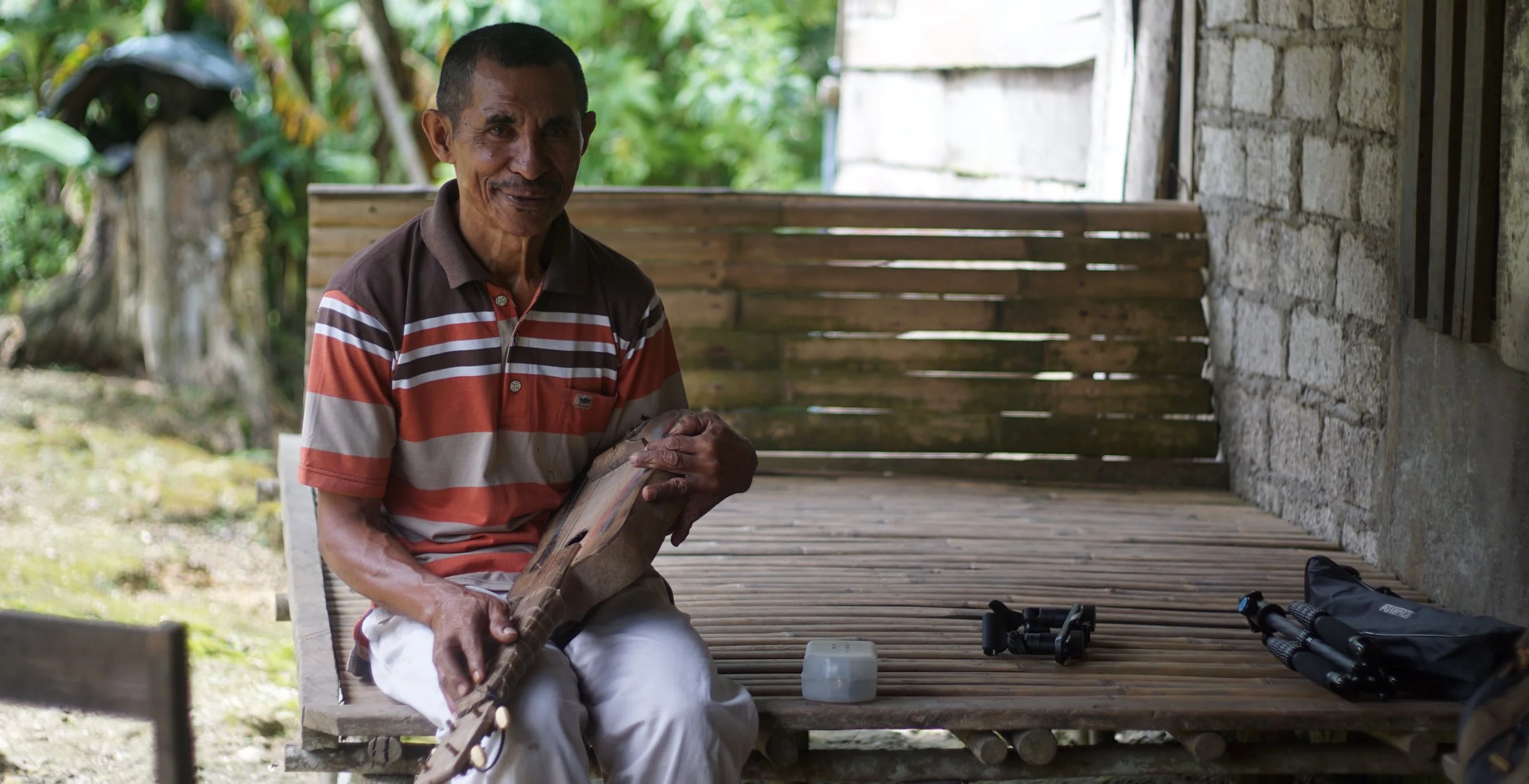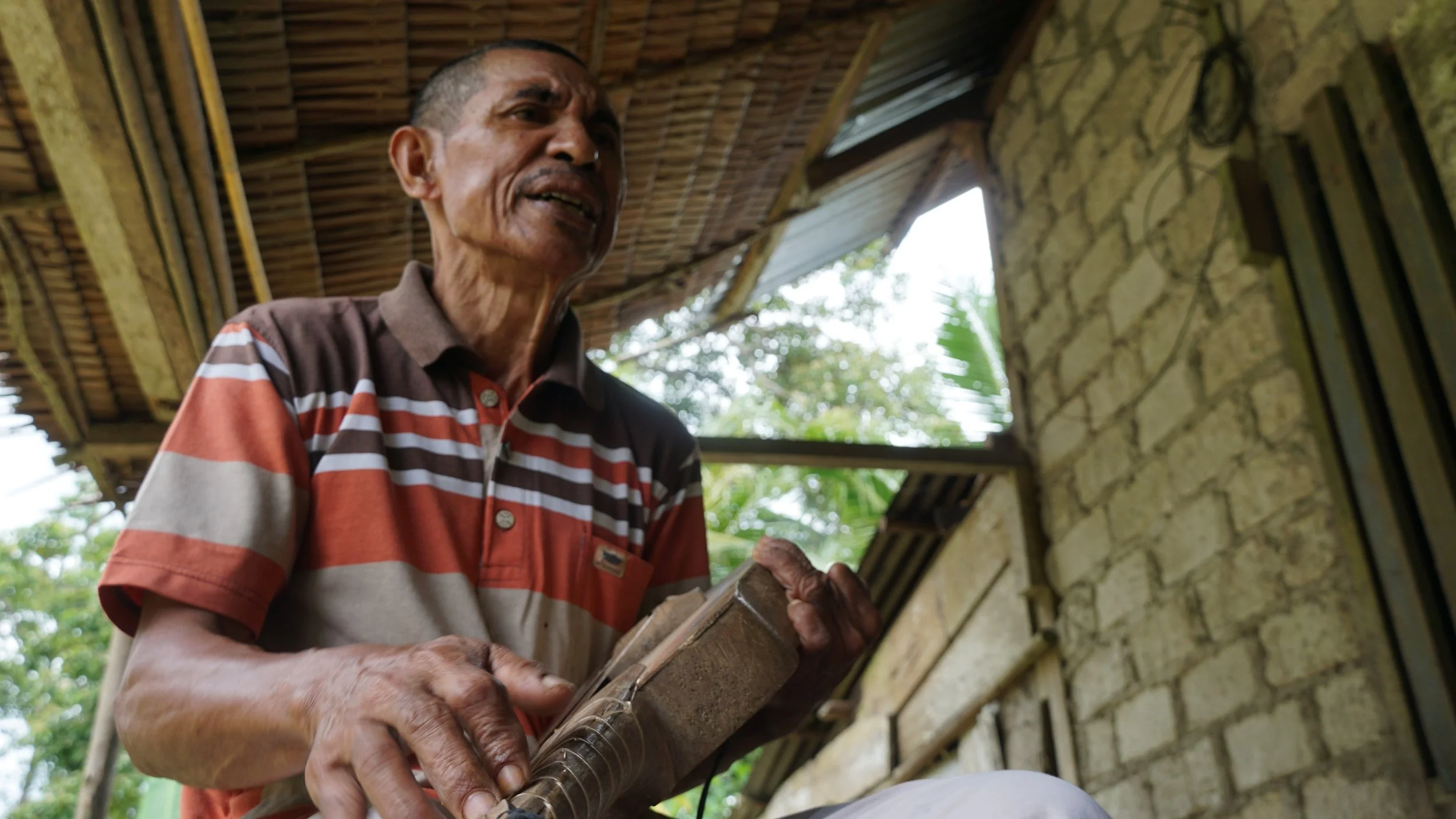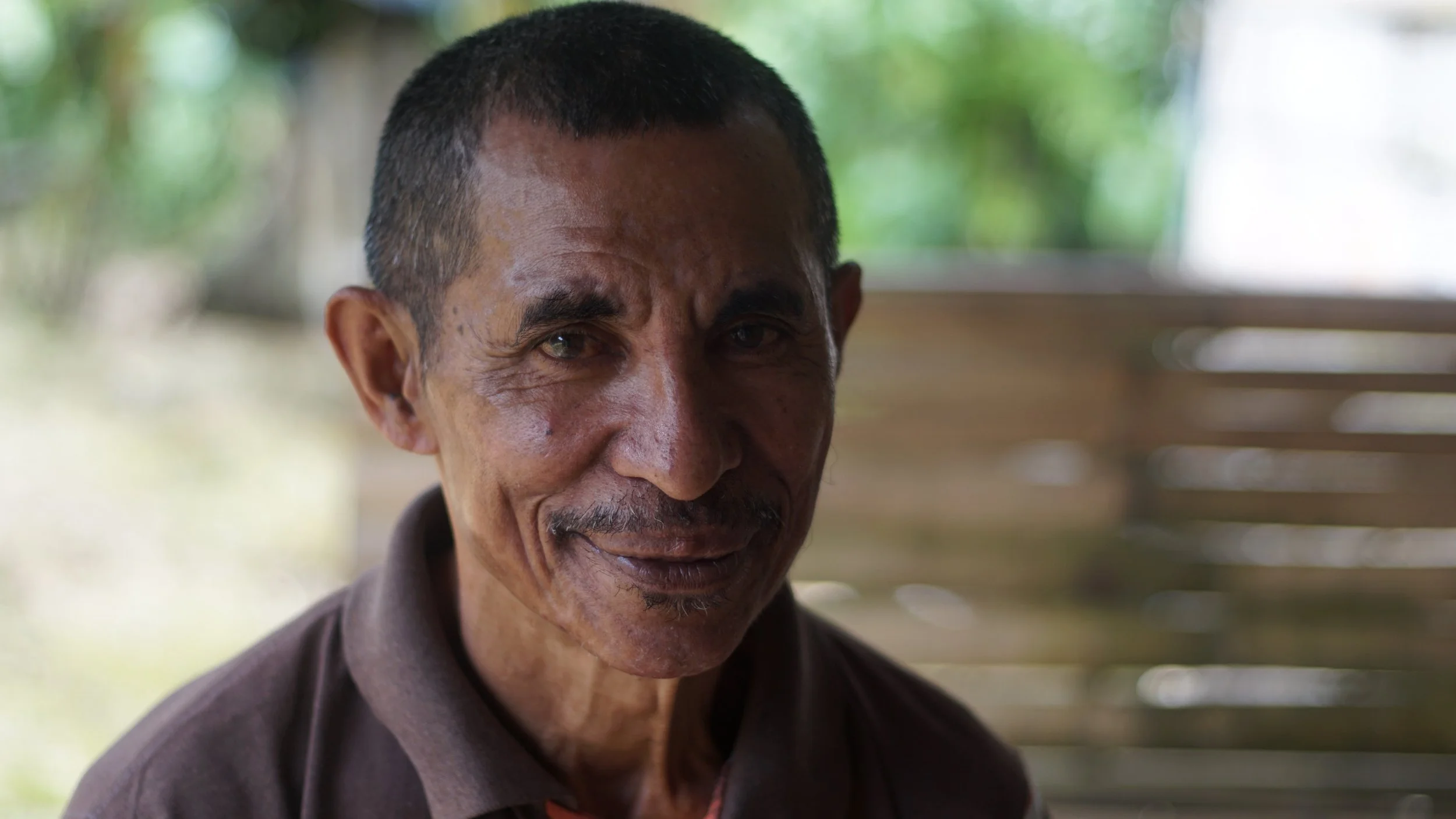Banggai Briefs: Om Nelis Bagitar Tangan Sebelah
Location: Ds. Basosol
Sound: Bagitar tangah sebelah
Nelis N. Yuune was born in 1969 in Basosol, a village on the island of Peling in Central Sulawesi’s Banggai Islands to a family of cassava farmers. Struck by an illness at four years old, Om Nelis was left with only partial use of his left side. Undeterred, he grew up in the fields with his family, dropping out of school to help them plant and harvest ubi. It was in the pondok, a remote farming hut, at 21 years old that he started picking up his brother’s guitar and figuring out a way to strum and fret chords with only his right hand, a technique he calls bagitar tangan sebelah (one-handed guitar playing.)
“It was torture!” Om Nelis recalled, “but I forced it anyway. My mom would massage my fingers and I’d try again.” Eventually he mastered the technique of plucking with his thumb while fretting with his remaining fingers and could pluck out the upbeat, keroncong-esque rhythms beloved of guitarists in East Indonesia. Om Nelis would hear dangdut and local pop Banggai (ballad-heavy pop in the regional Banggai language) on the radio and find a way to play them with the handful of chords he could form.
Armed with this new talent and a sweet, high voice, Om Nelis started playing parties around the village. Soon, he was fending off suitors left and right. “I never got girls before that!,” Om Nelis remembered with a laugh. When his wife saw him play for the first time, “I think she must have fallen in love right there!”
“I liked singing, and didn’t have an instrument, so I made my own.” Om Nelis crafted this gitar (a four-stringed lute also called okulele) out of a local wood (kayu kambangan), spare guitar parts, and nylon fishing wire for both frets and strings. Playing it until it broke, he’d make another, always taking it with him as he worked his way around Central Sulawesi - at a cacao plantation in Poso with his cousin in the early nineties, at a mining operation in Taliabu in the Maluccas with his son.
Om Nelis’s life has been full of brutally hard labor and strife, but music brought relief. “If I didn’t have my gitar for a day or two, I’d feel terrible. I had to have it, I had to sing. Out in the fields, sitting and playing, the tiredness would disappear.”
Bringing his gitar around his island of Peling while selling farming equipment, Om Nelis eventually had a big break when a local took video of him playing and uploaded it to YouTube. With the video going locally viral, he was suddenly known and beloved across the island - this is how I found out about his remarkable music a few years back.
On a trip to Banggai this past summer, I made it a mission to meet and hear Om Nelis’ music in person. A new friend named Karim helped drive me out from near the port town of Salakan to the countryside of Liang, on a narrow strip of green land hemmed in by bright blue waters. We passed cassava plantations and small roadside mining operations before finally reaching Basosol, where a quick mention of “Om Nelis” has locals pointing us towards his house.
He was out working in the fields when we arrived, but family nearby rushed off to hail him and within minutes he was there wearing that sweet smile I’d seen in the YouTube video. He seemed surprised and happy to have fans coming to visit, grabbing his gitar and playing a collection of songs that moved through dangdut hits of yesteryear and pop songs in the Banggai language. One tune, “Solilungon,” really struck me. Named after an endemic bird, the song is from the perspective of someone just like Om Nelis, a migrant leaving Banggai behind in search of a better life. Hearing the sound of the solilungon, he weeps, as the sound reminds him of home. The migrant plays his talilu, a Banggai bamboo flute, and the music soothes him.
This must be universal, right, the power of music to act as a balm for our weary souls? I certainly feel it when I listen to Om Nelis, and I hope you do, too.




